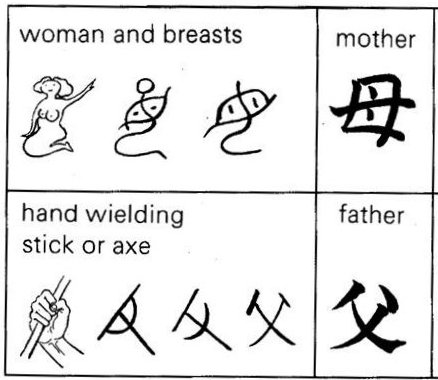|
"The Sun and the Moon were siblings - a brother and a sister - without parents. Siqiniq (the Sun) was staying all alone in an igloo. The camp would hold festivities in the qaggiq. One day, as usual, they started to hold a qaggiq early in evening when it was dark. Someone rushed into Siqiniq's igloo and blew out her qulliq at the same time. She was then pinned down and molested. This happened a number of times and Siqiniq was unable to find out who her attacker was. Her cooking pot always hung over her qulliq. When her attacker came again, she reached out and tried to touch the pot but her lamp was out and it was completely dark. Finally she managed to touch the pot. She then wiped her sooty hands on the face of her aggressor. After she had been molested once again the aggressor left her igloo. She followed him to see where he would go, hoping to finally find out who he was. She saw him going to the qaggiq where the festivities were being held. As she neared it she could hear people laughing. Someone was saying: 'Taqqiq inutuarsiurasumut aasit naatavinaaluk'. - Taqqiq (the Moon) has been marked with soot as he has again been looking for someone who might have been alone. So Siqiniq entered the qaggiq and saw that her brother's face was covered with soot. Embarrased and angry, she took her breast, cut it off and offered it to her brother saying that, as he liked all of her so much, why not eat her breast as well. Her brother refused the breast, but she continued to offer it. Then they both lit torches and ran out of the qaggiq. Siqiniq followed, breast in hand, still offering it to her brother. As she chased her brother around the qaggiq, Taqqiq fell down, extinguishing the flame on his torch, leaving only smouldering embers. Siqiniq's torch continued to burn brightly. Soon they both went up to the sky where the sister became Siqiniq, the Sun, while her brother became Taqqiq, the Moon." (Arctic Sky)
|
|
Sun and Moon when in conjunction implies the sign of soot, it seems. The occasion is located at the 'Tree': "Partly within the constellation's boundaries, and at the point of the nearest approach of the Milky Way to the south pole, is the pear-shaped Coal-sack, or Soot-bag, 8º in length by 5º in breadth, containing only one star visible to the naked eye, and that very small, although it has many that are telescopic, and a photograph taken at Sydney in 1890 shows about as many in proportion as in the surrounding region. This singular vacancy was first formally described by Peter Martyr, although observed in 1499 by Vicente Yañes Pinzon, and designated by Vespucci as 'il Canopo fosco', and perhaps alluded to by Camões. Narborough wrote of it in 1671 as 'a small black cloud which the foot of the Cross is in'; but before him it was Macula Magellani, Magellan's Spot, and fifty years ago Smyth mentioned it as the Black Magellanic Cloud. Froude described it in his Oceana as 'the inky spot - an opening into the awful solitude of unoccupied space'. A native Australian legend, which 'reads almost like a Christian parable', says that it was 'the embodiment of evil in the shape of an Emu, who lies in wait at the foot of a tree, represented by the stars of the Cross, for an opossum driven by his persecutions to take refuge among its branches'." (Allen) The 'Tree', in turn, is located more or less vertically oriented between the solstices: ... Day of the Winter Solstice - A - aidhircleóg, lapwing; alad, piebald. Why is the Lapwing at the head of the vowels? Not hard to answer. It is a reminder that the secrets of the Beth-Luis-Nion [the ABC of the pre-latin Ogham alphabet] must be hidden by deception and equivocation, as the lapwing hides her eggs. And Piebald is the colour of this mid-winter season when wise men keep to their chimney-corners, which are black with soot inside and outside white with snow; and of the Goddess of Life-in-Death and Death-in-Life, whose prophetic bird is the piebald magpie ...
|
|
With one breast only intact, sister sun would shine only during half a year, the summer time. In the arctic area they cannot enjoy the nourishing light and warmth of her for more than half of the year. The two breasts of sun means the two main seasons of the year. If sun is female, then Mother Earth is just a reflection of her. Perhaps once this was the general thought pattern, a pattern later changed by men in order to become more powerful and get more status? The Chinese sign for mother lost its head at some early point in history, a detronisation? The signs for mother and father are illuminating:
The spine located between mother's two breasts should be a line between two cardinal points. Her strangely pointing arm, forward and up, could point to summer solstice, that's the time when sun is highest in the sky. The other hand should point to winter solstice, with sun very low. At summer solstice the direction to the rising sun at sunrise is not due east but northeast. A consequence of the slanting 'Tree' is that the crossbeam arm (rima) between the equinoxes also should be slanting, which in turn could explain why the 'canoe' cannot be horizontal.
|
